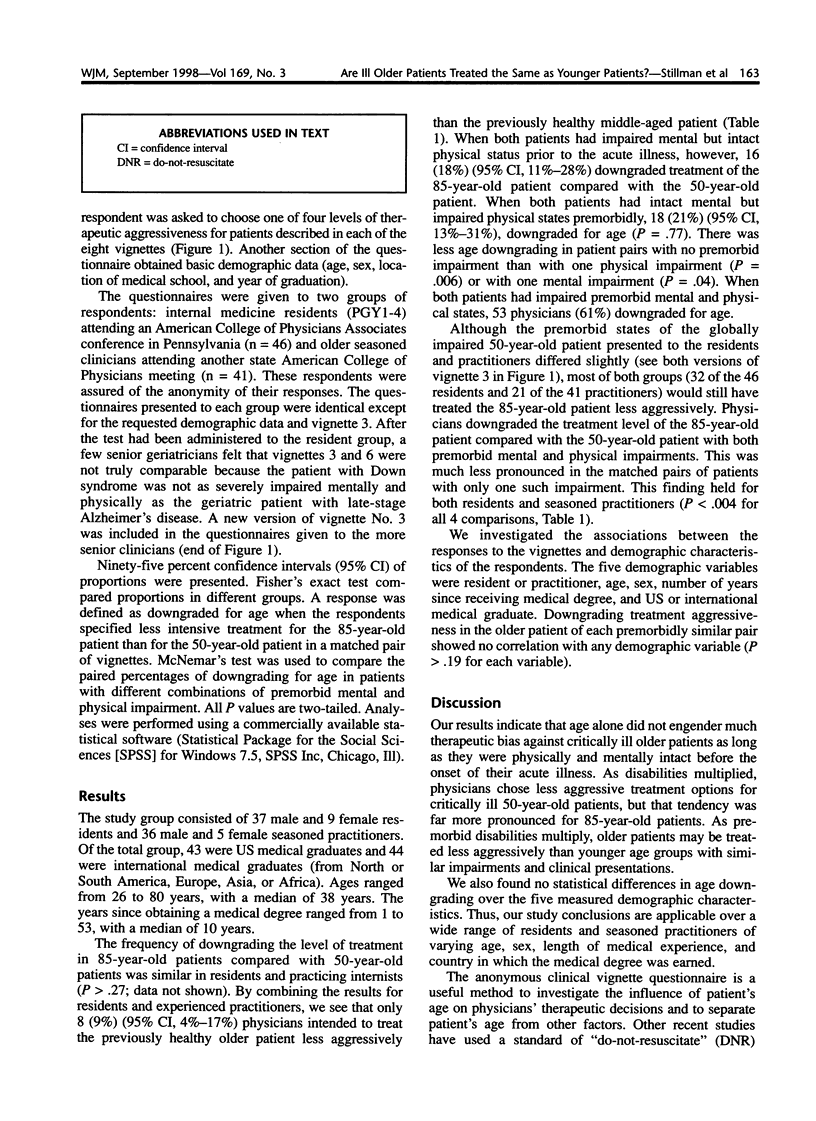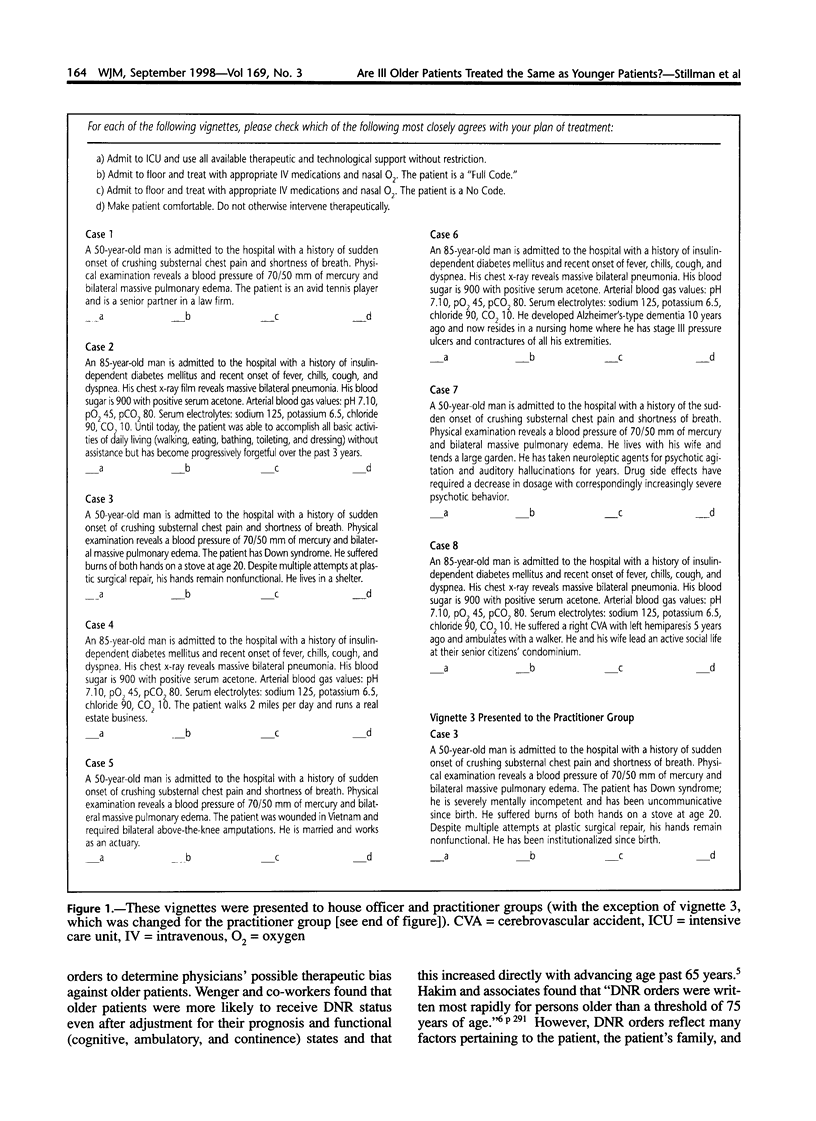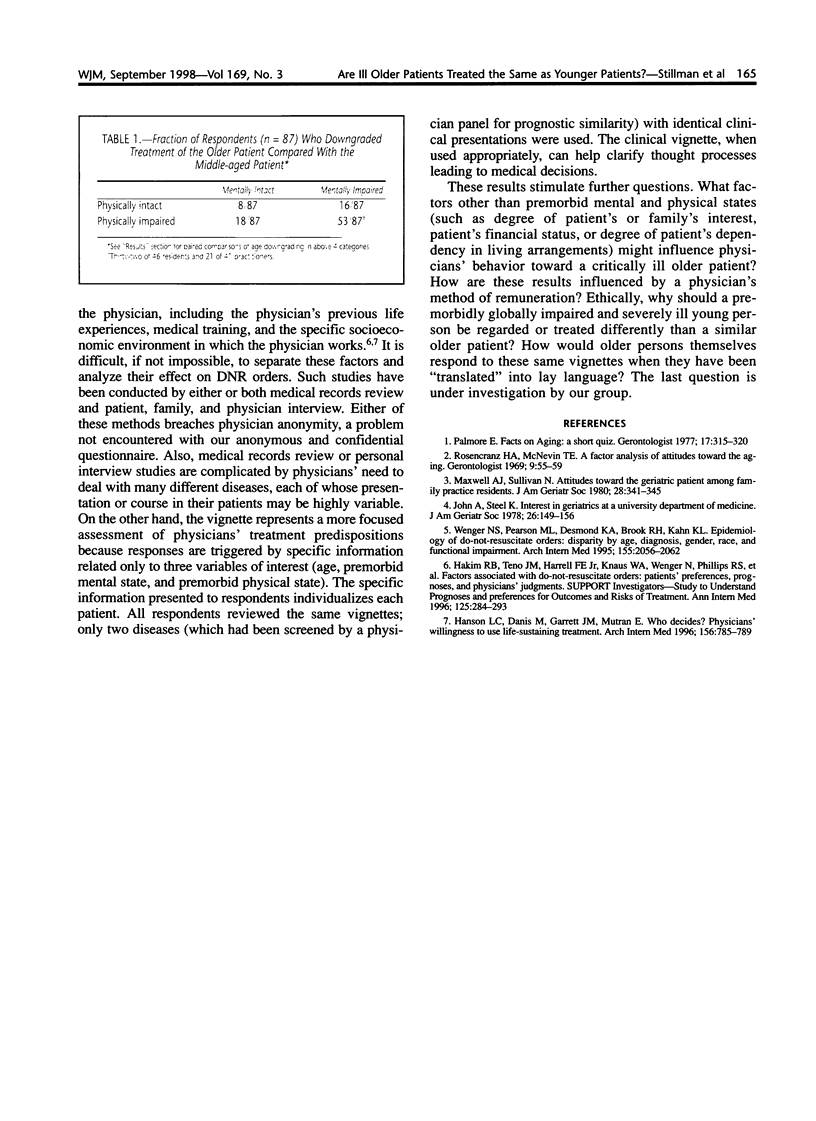Abstract
Our goal was to determine whether critically ill older patients are treated differently than middle-aged patients. If so, what factors besides age contribute to that difference? Internal medicine residents (n = 46) and practicing internists (n = 41) received 8 clinical vignettes of 4 critically ill 85-year-old patients and 4 critically ill 50-year-old patients. Each patient had a distinct premorbid mental and physical state. Each respondent selected from 4 levels of therapeutic aggressiveness for each patient. The main outcome measure was the proportion of physicians who intended to treat the older of each matched pair of patients less aggressively than the younger one (that is, downgraded for age). Eight physicians (9%) treated a previously unimpaired 85-year-old patient less aggressively than a comparable 50-year-old patient. When the matched patients were either premorbidly mentally or physically impaired (but not both), about 20% of physicians downgraded for age. Most downgraded for age in matched patients who were premorbidly both mentally and physically impaired. We conclude that age alone does not engender much therapeutic bias against older patients as long as they are physically and mentally intact before the onset of their acute illness. As premorbid disabilities multiply, older patients may be treated less aggressively than younger ones with similar impairments and clinical presentations.
Full text
PDF



Selected References
These references are in PubMed. This may not be the complete list of references from this article.
- Hakim R. B., Teno J. M., Harrell F. E., Jr, Knaus W. A., Wenger N., Phillips R. S., Layde P., Califf R., Connors A. F., Jr, Lynn J. Factors associated with do-not-resuscitate orders: patients' preferences, prognoses, and physicians' judgments. SUPPORT Investigators. Study to Understand Prognoses and Preferences for Outcomes and Risks of Treatment. Ann Intern Med. 1996 Aug 15;125(4):284–293. doi: 10.7326/0003-4819-125-4-199608150-00005. [DOI] [PubMed] [Google Scholar]
- Hanson L. C., Danis M., Garrett J. M., Mutran E. Who decides? Physicians' willingness to use life-sustaining treatment. Arch Intern Med. 1996 Apr 8;156(7):785–789. doi: 10.1001/archinte.156.7.785. [DOI] [PubMed] [Google Scholar]
- John A., Steel K. Interest in geriatrics at a university Department of Medicine. J Am Geriatr Soc. 1978 Apr;26(4):149–156. doi: 10.1111/j.1532-5415.1978.tb05043.x. [DOI] [PubMed] [Google Scholar]
- Maxwell A. J., Sullivan N. Attitudes toward the geriatric patient among family practice residents. J Am Geriatr Soc. 1980 Aug;28(8):341–345. doi: 10.1111/j.1532-5415.1980.tb01095.x. [DOI] [PubMed] [Google Scholar]
- Palmore E. Facts on aging. A short quiz. Gerontologist. 1977 Aug;17(4):315–320. doi: 10.1093/geront/17.4.315. [DOI] [PubMed] [Google Scholar]
- Rosencranz H. A., McNevin T. E. A factor analysis of attitudes toward the aged. Gerontologist. 1969 Spring;9(1):55–59. doi: 10.1093/geront/9.1.55. [DOI] [PubMed] [Google Scholar]
- Wenger N. S., Pearson M. L., Desmond K. A., Harrison E. R., Rubenstein L. V., Rogers W. H., Kahn K. L. Epidemiology of do-not-resuscitate orders. Disparity by age, diagnosis, gender, race, and functional impairment. Arch Intern Med. 1995 Oct 23;155(19):2056–2062. [PubMed] [Google Scholar]


